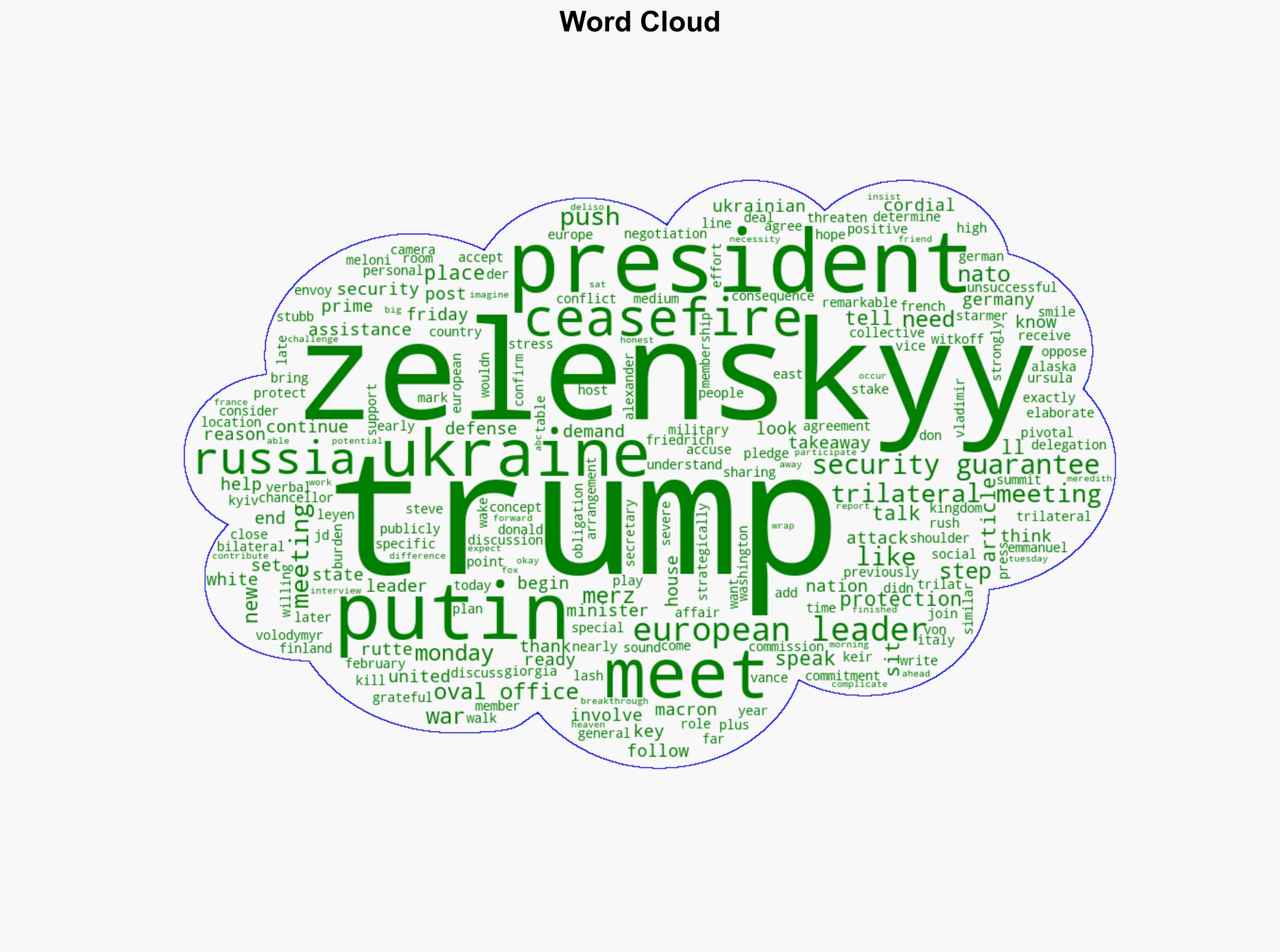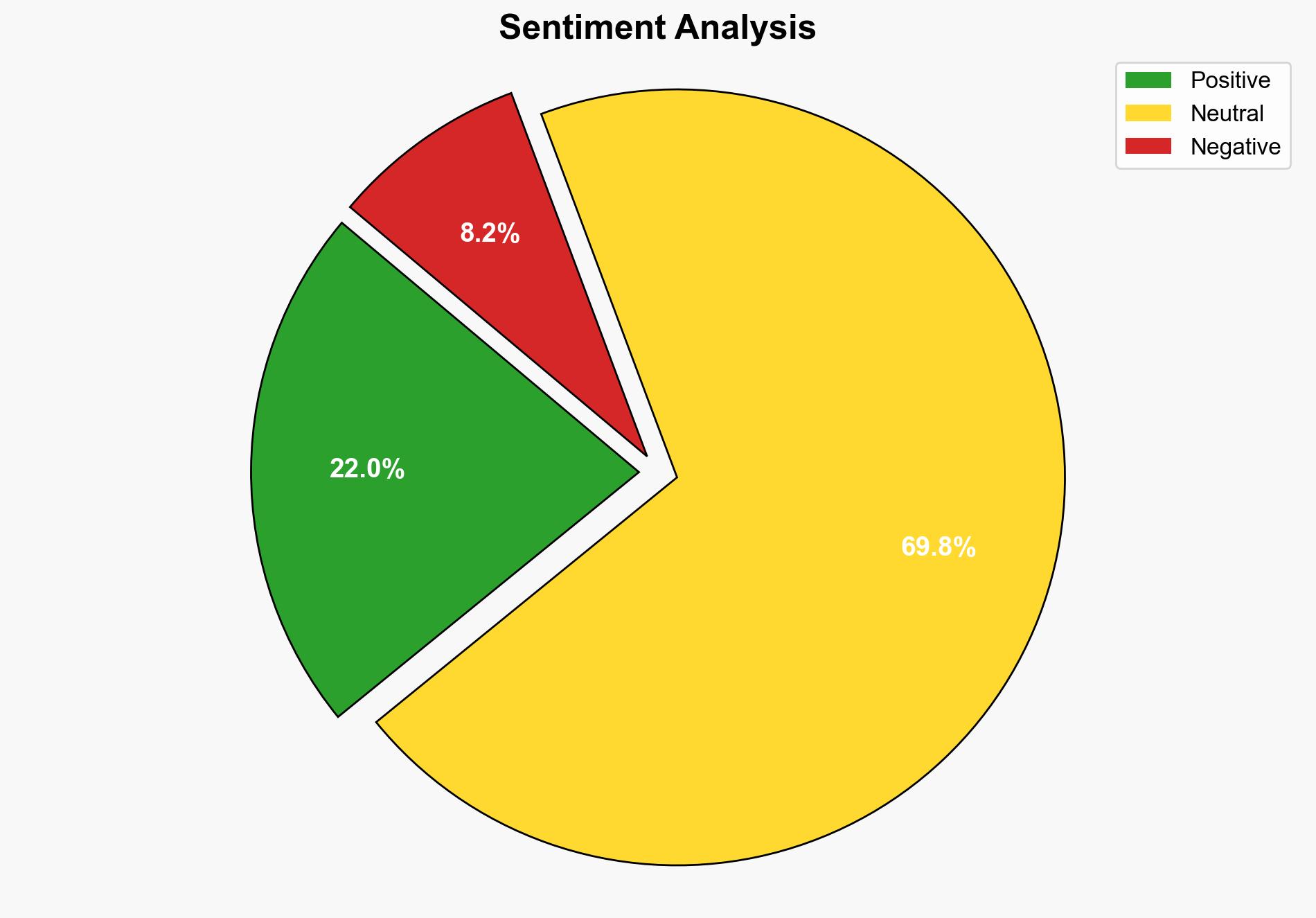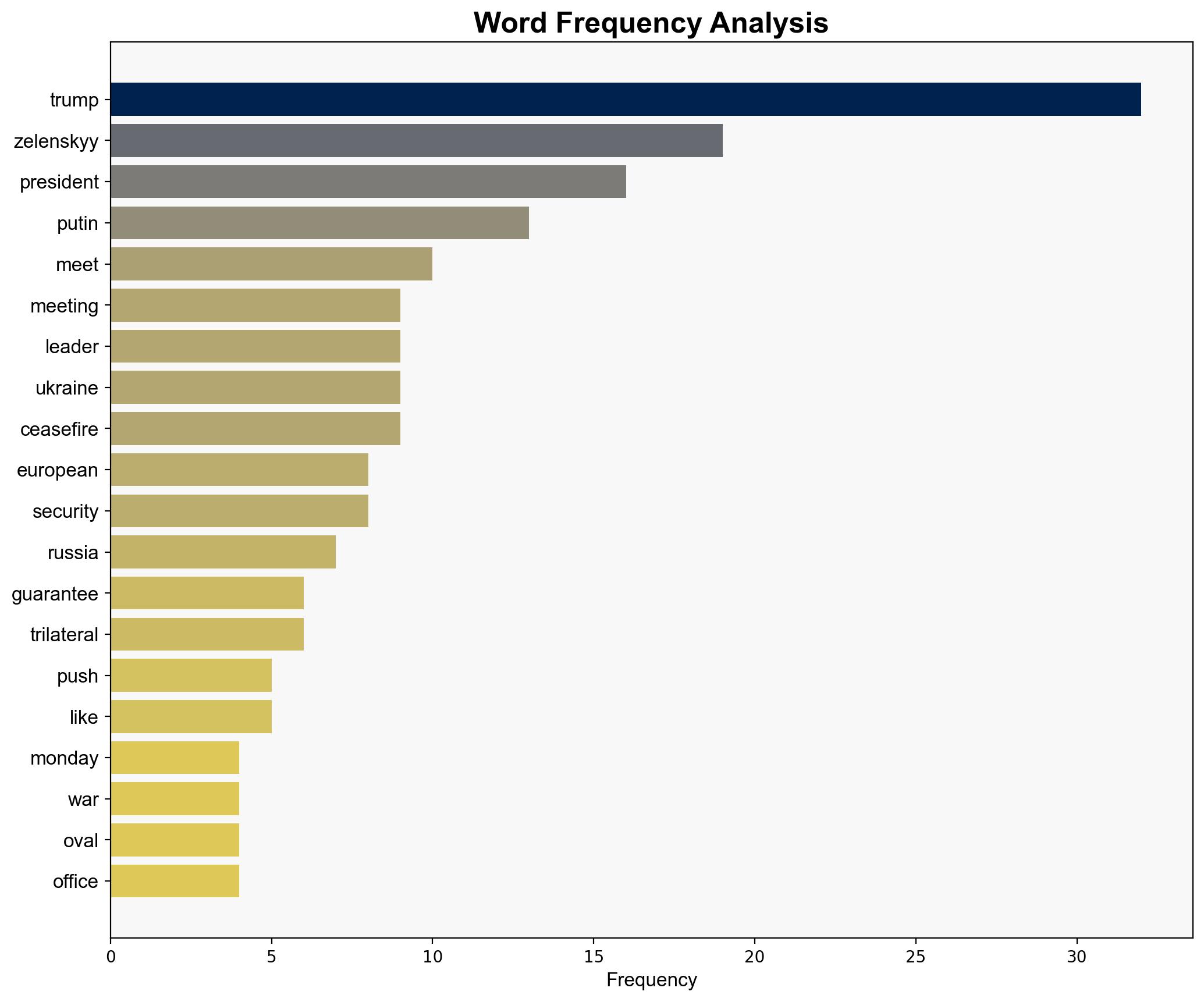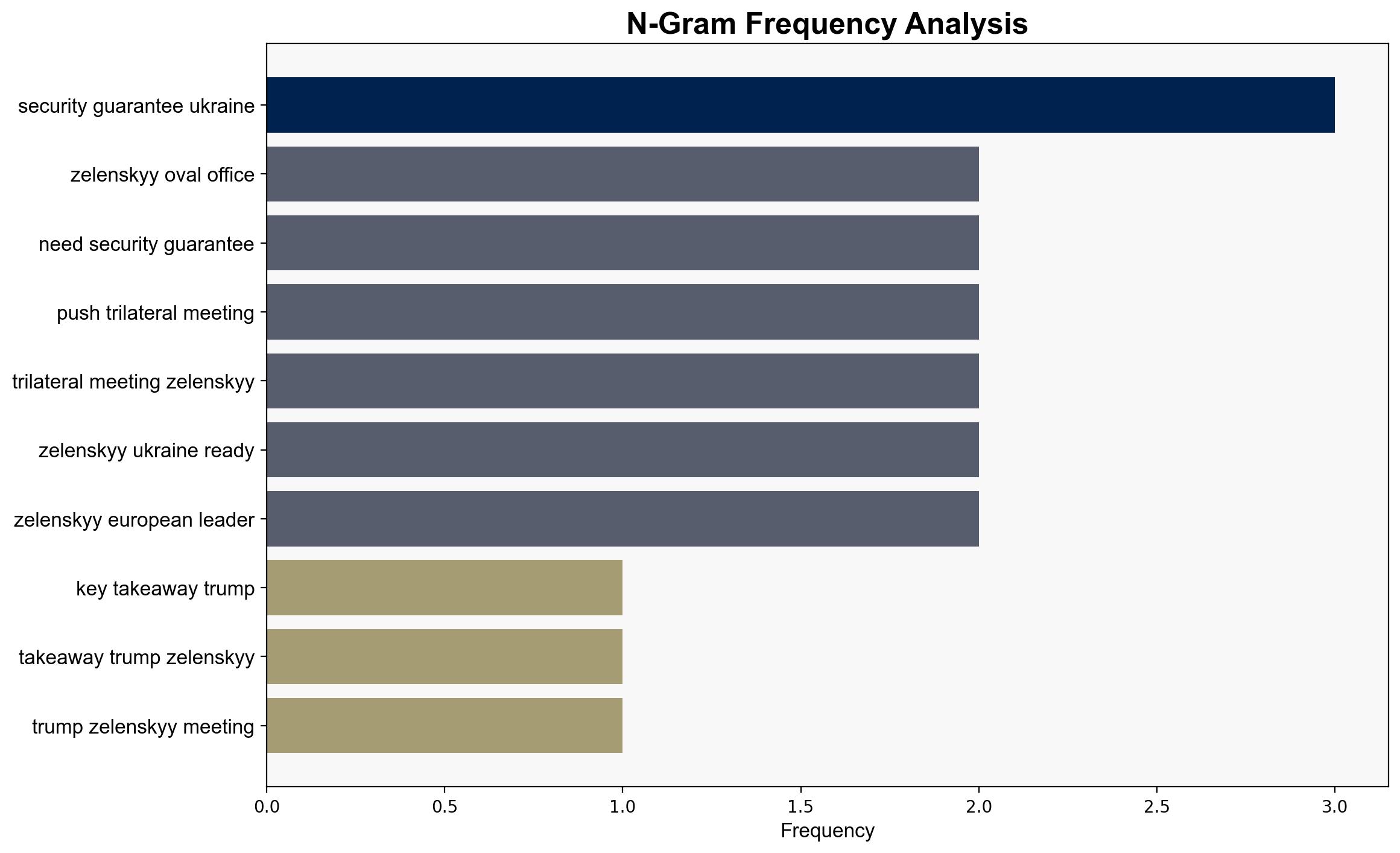Key takeaways from Trump and Zelenskyy’s Oval Office meeting to discuss Ukraine – ABC News
Published on: 2025-08-18
Intelligence Report: Key takeaways from Trump and Zelenskyy’s Oval Office meeting to discuss Ukraine – ABC News
1. BLUF (Bottom Line Up Front)
The meeting between Trump and Zelenskyy, alongside European leaders, signals a potential shift in the diplomatic approach to the Ukraine conflict. The most supported hypothesis is that the meeting aims to establish a new trilateral negotiation framework involving Russia, Ukraine, and the U.S. Confidence level: Moderate. Recommended action: Monitor developments in trilateral talks and assess the impact on regional security dynamics.
2. Competing Hypotheses
1. **Hypothesis A**: The meeting is primarily a diplomatic effort to initiate a trilateral negotiation framework involving Trump, Zelenskyy, and Putin, aimed at achieving a ceasefire and security guarantees for Ukraine.
2. **Hypothesis B**: The meeting is a strategic maneuver by Trump to assert U.S. influence in European security matters, leveraging the Ukraine conflict to strengthen ties with European leaders and counterbalance Russia’s regional influence.
Using ACH 2.0, Hypothesis A is better supported by the emphasis on trilateral talks and the involvement of European leaders seeking security guarantees. Hypothesis B lacks direct evidence of strategic U.S. dominance intentions but remains plausible given historical U.S. foreign policy patterns.
3. Key Assumptions and Red Flags
– **Assumptions**:
– Trump and Zelenskyy genuinely seek a diplomatic resolution to the conflict.
– European leaders are aligned with the proposed security guarantees.
– **Red Flags**:
– Lack of clarity on the specifics of the security guarantees.
– Potential overestimation of Russia’s willingness to engage in trilateral talks.
– **Blind Spots**:
– Internal political dynamics within Russia and Ukraine that may affect negotiations.
– The role of non-state actors in influencing the conflict’s trajectory.
4. Implications and Strategic Risks
– **Geopolitical**: A successful trilateral framework could stabilize Eastern Europe but may provoke Russian countermeasures.
– **Economic**: Prolonged conflict or failed negotiations could disrupt European energy markets.
– **Cybersecurity**: Increased cyber threats from state and non-state actors as leverage in negotiations.
– **Psychological**: Public perception of U.S. leadership in conflict resolution could shift, impacting domestic and international support.
5. Recommendations and Outlook
- Engage in diplomatic backchannels to gauge Russia’s true intentions and readiness for trilateral talks.
- Prepare contingency plans for potential escalation scenarios, including economic sanctions and cyber defense measures.
- Scenario Projections:
– **Best Case**: Successful trilateral talks lead to a ceasefire and security guarantees, stabilizing the region.
– **Worst Case**: Talks collapse, leading to intensified conflict and broader regional instability.
– **Most Likely**: Incremental progress in negotiations with ongoing tensions and sporadic conflict.
6. Key Individuals and Entities
– Donald Trump
– Volodymyr Zelenskyy
– Vladimir Putin
– European leaders including Mark Rutte, Ursula von der Leyen, Emmanuel Macron, Friedrich Merz, Keir Starmer, Giorgia Meloni, and Alexander Stubb.
7. Thematic Tags
national security threats, geopolitical strategy, diplomatic negotiations, regional stability




